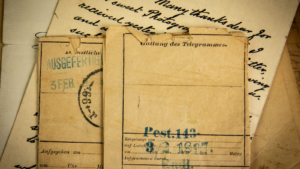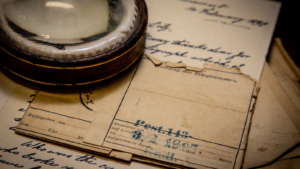In an era where instant messaging apps dominate communication, it’s fascinating to look back at the humble beginnings of long-distance communication—the old telegram. Once a revolutionary breakthrough, telegrams transformed how people connected across vast distances, often serving as a way to convey important news that could evoke strong family triggers. This service, which peaked in the late 19th and early 20th centuries, allowed individuals to send short, concise messages quickly.
The telegram’s impact on society was profound. It connected continents, facilitated business transactions, and even played pivotal roles in historical events, much like a thrilling casino game that keeps players engaged and connected. Despite its simplicity, the telegram was a precursor to the rapid communication channels we rely on today. As we explore the history and significance of the telegram, we uncover a story of innovation that laid the groundwork for the digital age.
Old:mxgzlq3ylao= Telegram
 The old telegram fundamentally reshaped communication, linking distant locations via electrical signals. Its advent in the 1840s marked a pivotal shift from letters and couriers. By 1866, transatlantic cables allowed near-instant contact between continents, impacting diplomacy and commerce.
The old telegram fundamentally reshaped communication, linking distant locations via electrical signals. Its advent in the 1840s marked a pivotal shift from letters and couriers. By 1866, transatlantic cables allowed near-instant contact between continents, impacting diplomacy and commerce.
Historical moments, like wartime communications, hinged on telegrams for swift, encrypted exchanges. Businesses leveraged this technology for rapid transactions and decisions. It also laid the groundwork for today’s digital communication by streamlining data transmission across distances.
Evolution Of Telegram Services
Early Innovations
Pioneers developed diverse techniques to enhance telegram services in their infancy. Samuel Morse’s creation of a dual-wire system in the 1830s enabled the transmission of telegraphic codes over long distances. This invention was further refined by Charles Wheatstone and William Cooke in the 1840s, who introduced the five-needle telegraph.
Popularity In 19th & 20th Centuries
The 19th and 20th centuries witnessed the widespread adoption of telegram services. Businesses and individuals increasingly relied on telegrams for timely and succinct communication. Western Union’s rapid expansion in the United States during this period signified a growing dependence on telegrams for urgent correspondence.
Impact On Communication
Global Connectedness And Modern Messaging Services
Telegrams played a pivotal role in knitting the world closer.  The establishment of undersea cables connected continents, making international correspondence swift and reliable. By 1914, the global telegraph network spanned over 1 million miles.
The establishment of undersea cables connected continents, making international correspondence swift and reliable. By 1914, the global telegraph network spanned over 1 million miles.
The telegram’s influence is evident in today’s messaging services. Direct and concise communication became the standard with telegram use.
This laid the groundwork for SMS and instant messaging, emphasizing brevity and speed. Features like message routing and delivery confirmation can be traced back to early telegraph innovations.
Collecting And Preserving Old Telegrams
Collectors’ Market
The collectors’ market for old telegrams remains vibrant, with items often sold at auctions and antique stores. Rare telegrams, featuring notable events (e.g., wartime communications), command higher prices. Enthusiasts seek telegrams with unique stamps or markings, adding historical value.
Preservation Techniques
Preserving old telegrams involves careful handling and storage to prevent deterioration. Use acid-free folders or boxes for storage, ensuring minimal exposure to light and humidity, which can degrade paper. Avoid folding telegrams to prevent creases and tears. Consider digitization as an additional preservation method, allowing for digital archiving while maintaining the original’s integrity.
Cultural References And Legacy
 Telegrams often appear in films, literature, and television series, symbolizing urgency and pivotal moments. In movies like “Titanic,” telegrams convey important plot points. Classic novels frequently include telegrams to advance storylines and develop character dynamics. These portrayals highlight the telegram’s historical role in society, offering audiences a glimpse into past communication methods.
Telegrams often appear in films, literature, and television series, symbolizing urgency and pivotal moments. In movies like “Titanic,” telegrams convey important plot points. Classic novels frequently include telegrams to advance storylines and develop character dynamics. These portrayals highlight the telegram’s historical role in society, offering audiences a glimpse into past communication methods.
For many, telegrams evoke nostalgia, representing a bygone era of communication. Collectors and historians view them as artifacts with sentimental value, connecting to personal or family histories. They symbolize poignant life events, preserved in concise, formal text. As digital communication dominates, telegrams serve as a reminder of the personal touch and importance embodied in historical exchanges.
Modern Messaging Technologies
The legacy of the telegram as a transformative communication tool continues to resonate in today’s digital age. Its influence is evident in modern messaging technologies, which owe much to the efficiency and immediacy pioneered by telegrams. As collectors and historians preserve these relics, they offer invaluable insights into societal shifts and the evolution of global connectivity. Telegrams remain a symbol of significant historical moments, bridging past and present communication methods. Their enduring cultural impact and nostalgic value remind us of a time when messages carried a personal touch, underscoring the telegram’s lasting significance in our interconnected world.
